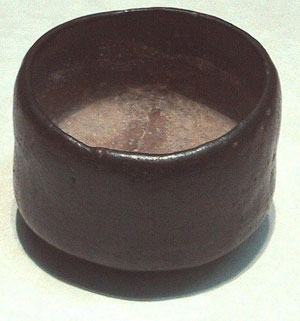Wabi-sabi is essential to Japanese aesthetics, in the same way that the Ancient Greeks’ idea of beauty is essential to understanding Western aesthetics. But while classical beauty is timeless and flawless, wabi-sabi is in-the-moment and imperfect. Classical beauty values polish; wabi-sabi values patina. Classical beauty is a property of great works of art, which can change you; wabi-sabi is an experience of beauty that you can have with any object if you only change yourself.
In reading Koren’s book, I found myself asking “why wabi-sabi?”, and by extension what kinds of justification can one offer for any aesthetic sensibility. I thought of Alain de Botton’s The Architecture of Happiness and its main idea that the objects with which we surround ourselves should reflect our values, if only to remind us of them lest we falter. Certainly, wabi-sabi reflects the values of the medieval Japan from whence it emerged. In a society in the grip of constant warfare, samurai could be called to die for their master at any time, so it’s easy to see the appeal of an aesthetic that values impermanence and finding beauty in the present moment, the everyday.
The Tea Masters

Wabi-sabi emerged out of the Zen tradition in Japan, and among its first advocates were the tea masters, professional practitioners of the tea ceremony. The first wabi-sabi tea master was Murata Shuko who lived in the 15th century. If you’ve ever witnessed a traditional Japanese tea ceremony, you know that the implements are often humble, made of wood and clay. But it wasn’t always this way. In Murata’s time, the aristocracy took great pride in its tea implements of the finest Chinese porcelain and gold. Murata, true to his Zen training, saw that such affectations were the opposite of Buddhist teachings, and he began using locally-produced, understated utensils.
Murata’s aesthetic gained further traction thanks to the most famous wabi-sabi tea master, Rikyu, who served the warlord Toyotomi Hideyoshi. Rikyu, too, used traditional, indigenous Japanese folkcraft implements instead of priceless Chinese treasures. Unfortunately, Rikyu’s boss, Toyotomi, was of peasant origins (and a badass daimyo not to be trifled with) who suspected Rikyu was playing a high-profile joke on him and ordered Rikyu to commit ritual suicide at age 70.
Intersections with Modernism
Like European modernism, wabi-sabi shuns unnecessary ornamentation. Both look minimalist, but while wabi-sabi gets rid of what is unnecessary, it recognizes that sometimes it is unnecessary to get rid of things–better to let them be. And while modernism is geometric and technological, wabi-sabi is organic and natural. Where modernism is cool and bright, wabi-sabi is warm and dim.
Making Wabi-Sabi Things
While Koren’s book is titled Wabi-Sabi for Artists, Designers, Poets, and Philosophers his advice for those mentioned in the title is only implicit. It seems to me that if you want to create wabi-sabi things, you should focus on the intrinsic, and resist thinking in terms of hierarchies or categories. For example, if you’re making a teacup, consider how tea is made and consumed, what materials you have on hand, and the object’s role in your life. Gold and porcelain are expensive and impractical, both to obtain and to maintain (tea stains the cup), and costly should the teacup inevitably break. On the other hand, clay is cheap and easy to obtain, quite sturdy, and because of its unpretentious nature, you won’t need to worry about keeping your clay teacup immaculate or if it falls to the floor and breaks. Therefore, instead of worrying about the cups, you can enjoy the tea. And isn’t that the point?
I’m ultimately drawn to the fact that wabi-sabi objects are more intimate for their imperfection. They embrace natural processes like wear, cracking, and the accumulation of patina, and as such they have stories to tell. Every perfect teacup is the same, but imperfect teacups are all imperfect in their own unique ways.
